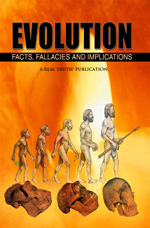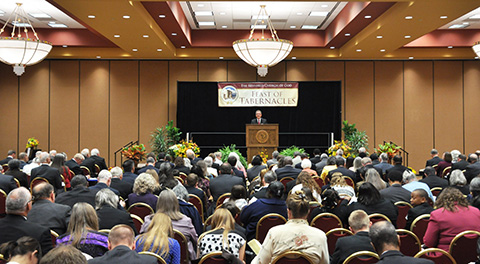This scripture presents a perfect example of how religionists ignore context, focusing on a single aspect of a verse to make it say something it clearly does not.
Notice the seven elements of this scripture:
“As they ministered to the Lord”—These men were seeking God’s will in a matter—specifically, the ordination of two men. James 4:8 states, “Draw near to God, and He will draw near to you.”
“…and fasted…when they had fasted”—Fasting is one of the tools of Christian growth. It helps us acknowledge to God that we are nothing, of and by ourselves. Fasting also binds Satan, blocking his influence. If you are drawing near to God, then you are also resisting Satan. And, as James 4:7 states, if you “resist the devil…he will flee from you.” By fasting, these men demonstrated to God that they wanted His complete and total involvement in what they were doing.
Also, a fast involves going without food and drink, usually for 24 hours. (Please read our article “What You Need to Know About Fasting” to learn more about how to fast.) Read Jeremiah 36:6; Matthew 9:15; Mark 2:19-20; Luke 5:35. So the period of time covered between verses 2 and 3 is about 24 hours. (Judges 20:26 and II Samuel 1:12 show fasts of shorter periods.)
“…the Holy Spirit said”—Did these men hear a constant voice for 24 hours? To properly understand this part of the scripture, review the Acts 5:3-4 explanation. Also, if they had heard a literal voice from God, why would they have felt the need to continue in fasting and prayer? They would have had their answer! (Notice II Samuel 12:16-23 and Daniel 10:3-13.) They were being guided by the Holy Spirit within them: “For as many as are led by the Spirit of God, they are the sons of God” (Rom. 8:14).
“Separate Me Barnabus and Saul for the work whereunto I have called them”—It is God the Father who does the calling (John 6:44, 65). The Holy Spirit is the means by which He does this. It is also the Father who determines who will be used in the ministry—and in what capacity (I Cor. 12:28). Again, notice Romans 8:14. Also, if this were a literal audible voice from a God Being, spoken for all to hear, it would have been accompanied by obvious displays of natural forces. (Notice John 5:37 and also Acts 9:3-7.)
“…and prayed”—Prayer is another tool of Christian growth, used to make our needs known to God. It is also the way we ask God to make His will known to us. (See Matthew 6:10; 26:39, 42.) Again, if they had already received an audible answer, why would they have continued in prayer?
“…and laid their hands on them”—The laying on of hands is a symbolic act used when God is called upon, in faith, to bless and sanctify (set apart) or to impart authority and power. It is done for four different and individual purposes: blessings, baptism, healing and ordination.
Genesis 48:13-20 records that Ephraim and Manasseh received a unique and great blessing when Israel (Jacob) laid hands upon them. The blessing of little children is also preformed by the laying on of hands, as Christ instructed (Mark 10:15-16; Matt. 19:13-15; Luke 18:15-17).
In the baptism ceremony, the repentant person receives the gift of the Holy Spirit by having hands laid on him. This is first recorded in Acts 8:17-18: “Then laid they their hands on them, and they received the Holy Spirit…through laying on of the apostles’ hands the Holy Spirit was given.” Also see Acts 19:5-6: “When they heard this, they were baptized in the name of the Lord Jesus. And when Paul had laid his hands upon them, the Holy Spirit came on them.” Paul was also instrumental in Timothy receiving God’s Holy Spirit (II Tim. 1:6).
God’s healing is also the result of an elder’s prayer with faith, accompanied by the laying on of hands on the head of the afflicted person. We find this example in Acts 9:17: “…and Ananias…entered into the house; and putting his hands on him said, Brother Saul, the Lord, even Jesus…has sent me, that you might receive your sight.”
Ordination into an office in God’s Church is also done through the laying on of hands. The first example is found in Acts 6:6-8, involving the ordination of deacons: “…and when they had prayed, they laid their hands on them…And Stephen, full of faith and power, did great wonders and miracles among the people.” God’s Church today faithfully observes this practice in all ordinations. Hebrews 6:2 lists it as one of God’s doctrines.
“…they sent them away”—These men were acting on God’s behalf, ordaining men into higher offices in the ministry. This part of the verse reveals two things: (a) In addition to prayer and fasting, they had also counseled together in order to reach a wise decision (notice Proverbs 11:14; 15:22); (b) the Holy Spirit did not, of itself, send these men out. Again, notice that the verse states, “…they [Niger, Lucius, Manaen—all apparently apostles] sent them away.”
While newspapers, magazines and other news media report what happened, The Real Truth analyzes and explains the root cause of why events happen—why humanity is at a loss to solve today’s problems.
This brochure investigates the theory of evolution, revealing that there is much more to the story than what is commonly taught. After laying a truthful foundation and building upon it, the reader…




















